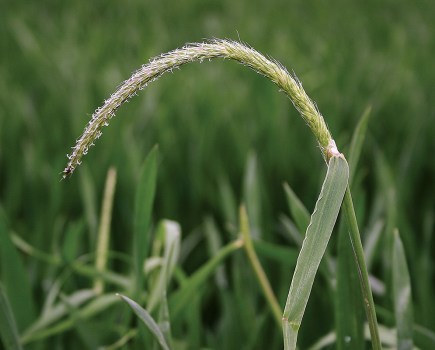Much of the early nitrogen applied to cereal and oilseed rape crops across the country during the mild late-February spell could go to waste unless steps are taken to keep it in the rooting zone long enough for crops to make use of it. CPM reports.
The unusually warm end to February provided an earlier than usual opportunity to get out onto fields. However, while many used the unexpected window as an opportunity to apply nitrogen, this could prove to be a waste, according to Agrovista technical manager, Chris Martin. “A lot of growers have been busy spreading bagged nitrogen, but most crops don’t need a lot this early, and probably won’t need much for a while yet. In some cases, up to half that applied so far could be wasted.”
The same is true for organic sources such as digestate and slurries on grass as well as arable crops, says Chris. “It may well be the case that the maximum permitted dose of 250kg/ha of organic N could be applied in one go.
“Up to 80% of that can be readily available in digestate, which equates to 200kg N. Generally speaking arable crops will take up no more than 3-5kg/N/ha/day, so the problem is obvious, even at lower application levels.”
Locking in N
To counter the problem, Chris recommends applying N-Lock Max to keep as much nitrogen as possible in the root zone, so it is readily available to crops when they really need it.
N-Lock Max is a new, more concentrated formulation of N-Lock that also works out cheaper than its predecessor.
It contains 300g/litre of nytrapyrin, a nitrogen stabiliser. This inhibits Nitrosomonas – the bacteria which are responsible for converting ammonium to nitrite within the soil, keeping nitrogen in the ammonium form for longer.
“Ammonium is positively charged and is much more stable, so is less likely to be lost to the environment through leaching or de-nitrification,” says Chris.
The product should be applied ideally within a week either side of the fertiliser being spread, as it need to be in the soil before rapid nitrification occurs.
The recommended rate is 1.7 litres/ha, in 100-200 litres/ha of water and works best if applied in damp conditions such as heavy dews or showers – or 12mm of rain falls within 10 days of application.
It can be applied with liquid fertiliser, slurry and digestate, and can be tank-mixed with most T0 sprays.
Protecting against losses
Applying N-Lock early in the season will also help protect against nitrogen losses from the main dressing and beyond, as it provides activity for up to 12 weeks. This also helps farmers to manage fertiliser applications and reduce the number of splits to ease workloads.
“The usual timing is T0, close to the first main fertiliser application, and many growers will be planning to use it at this timing, particularly on leaky soils or high-potential crops,” he adds.
N-Lock, a lower-concentrate formulation which was applied at a higher rate to put down the same amount of active ingredient, produced some impressive results in when trialled across 11 sites in in 2013 and 2014, increasing wheat yields by an average of 5%.
In the field, average yield increases of 10% are regularly recorded, says Chris.
“Applying N-Lock Max ahead of the fertiliser is preferred. So, in a season like this, going earlier to help preserve some of the early-applied N makes good sense.”
N-Lock Max
- Optimises yield and quality in crops
- Winter wheat yields increased by average 5%
- Reduces nitrate leaching by average 16% average
- Reduces nitrous oxide emissions by average 51%
- Protects N in all urea/ammonium based fertilisers




